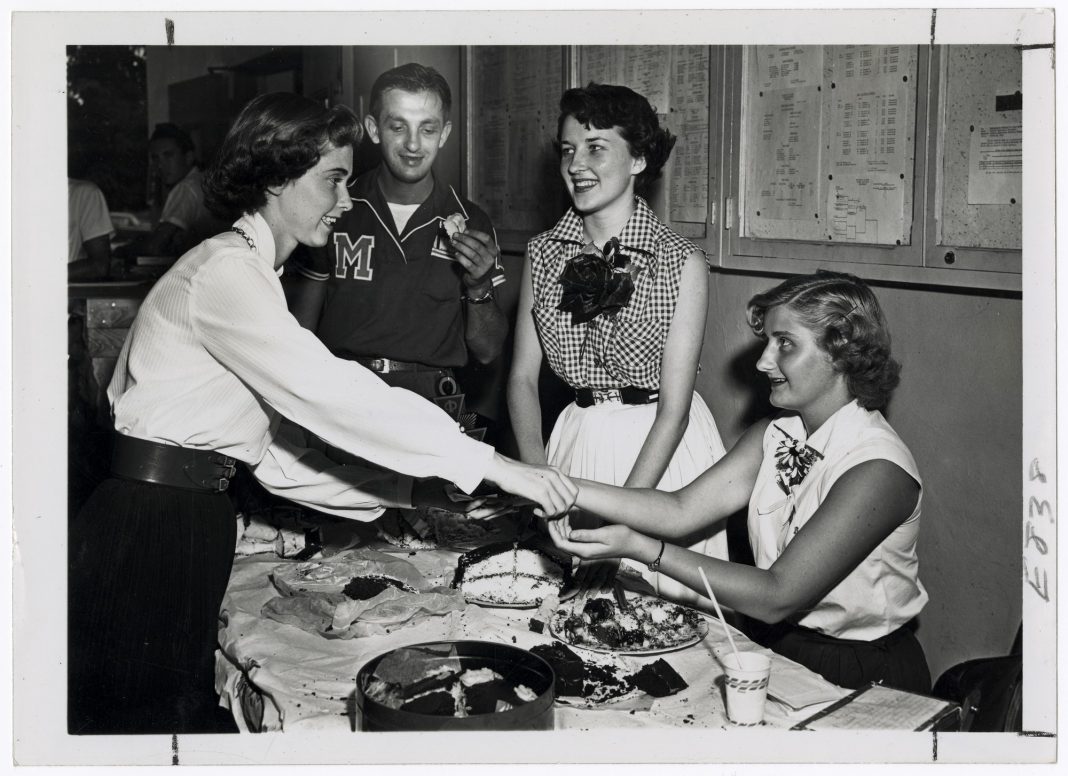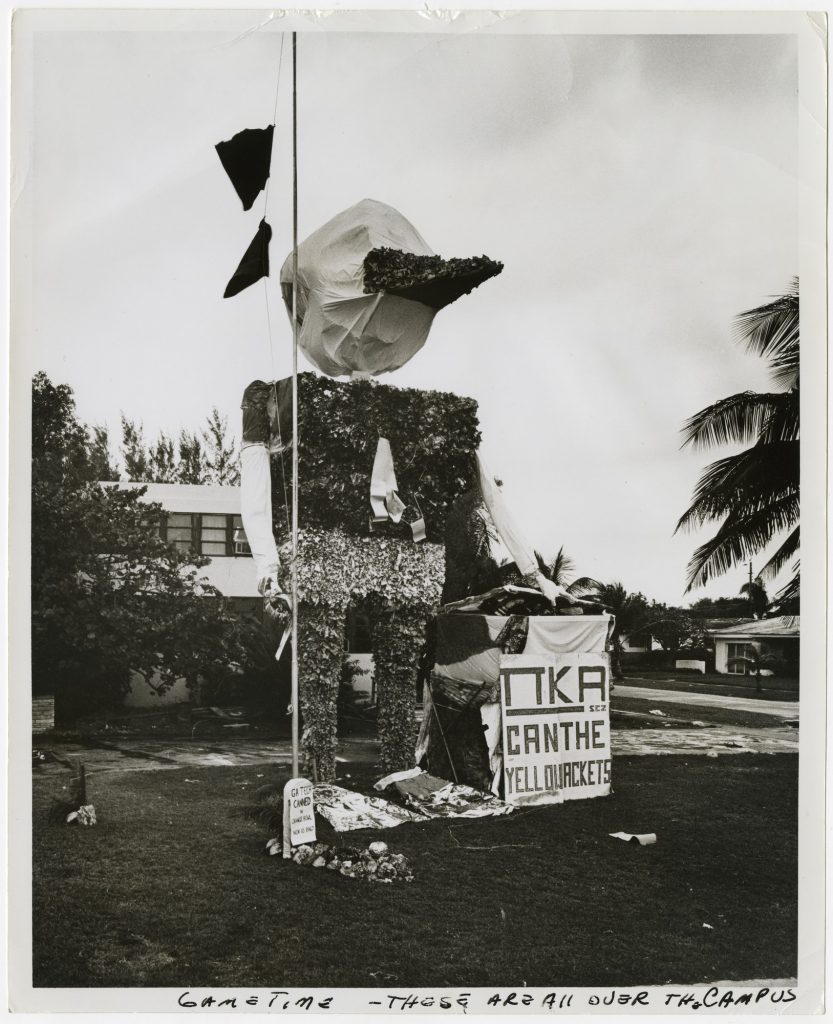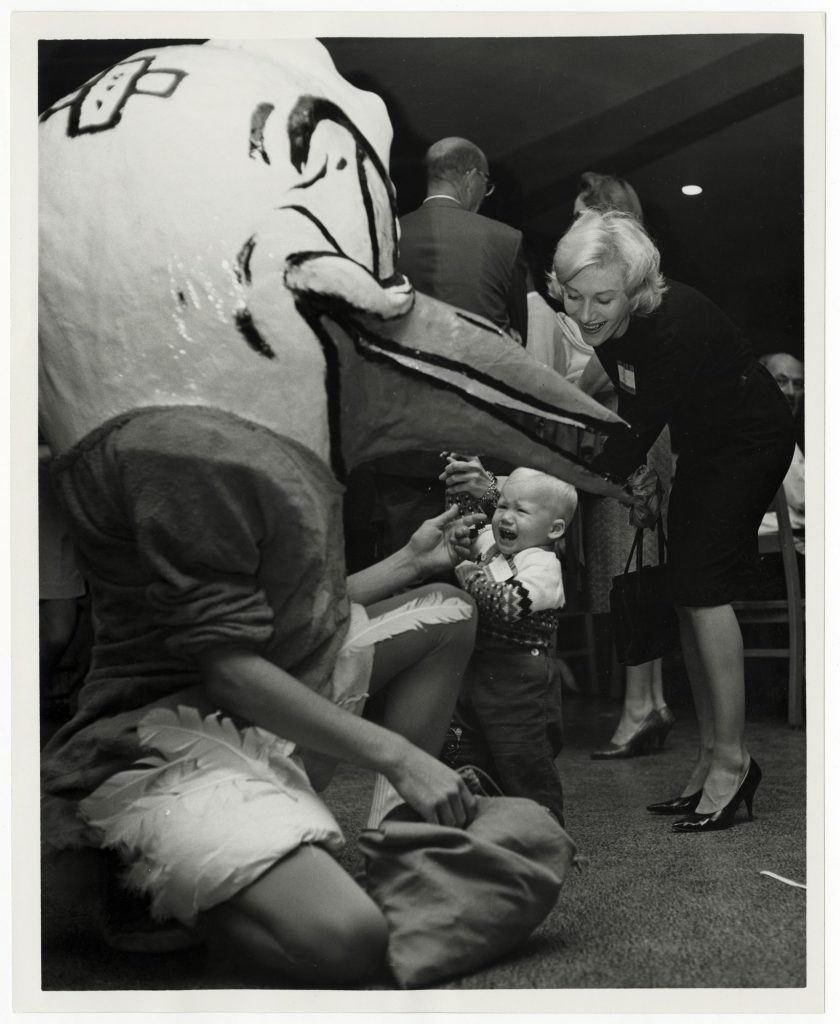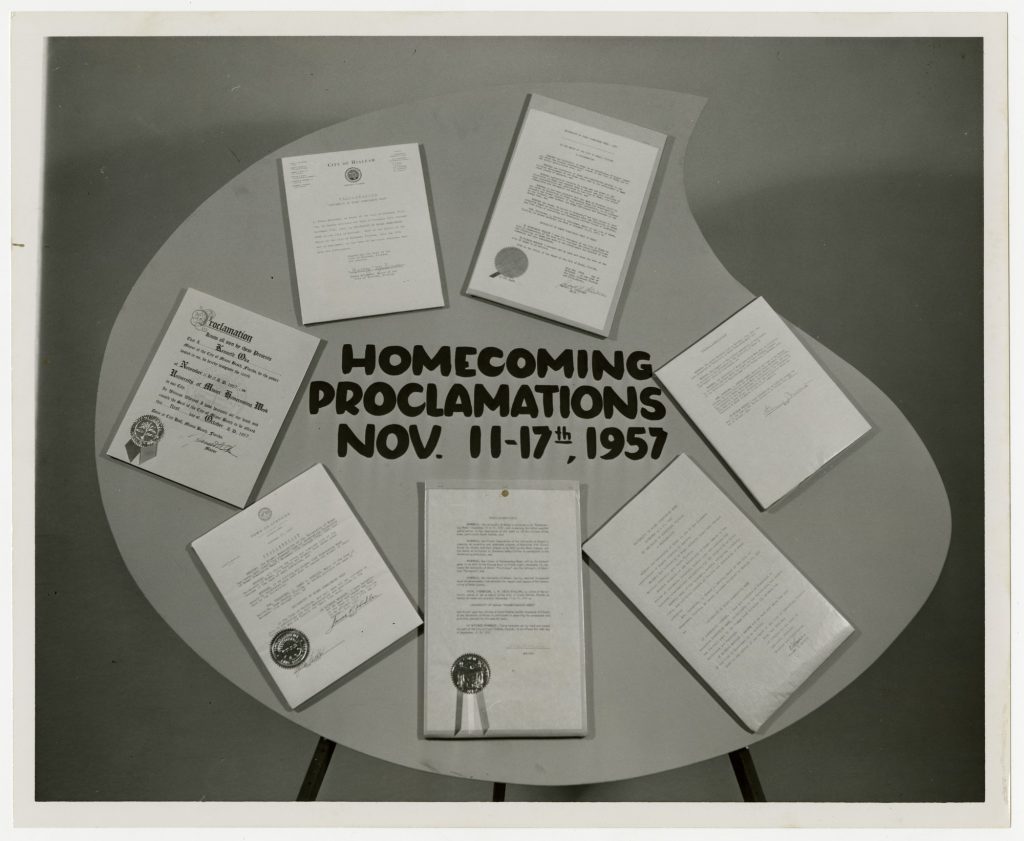
Traditionally, a Homecoming is a time for alumni of a high school or university to return to celebrate the institution. At the University of Miami, Homecoming means that and so much more. Every year the Homecoming Executive Committee (HEC) puts on a week of events that are rooted in tradition and dedicated to honoring the spirit, diversity and history of the University of Miami.
The earliest records of Homecoming at the U can be found in The Miami Hurricane. In 1931, the University announced its first ever Homecoming celebration. Almost 100 years ago, Homecoming looked a little different. The committee in place planned a week of social functions ending in a football game against the Seeders of Erskine College. Events included a reception by the University Women’s Association and an open house at Delta Sigma Kappa, leading to what they called the “largest event of the season” — an Alumni Dance in Downtown Miami. At the time, the events were aimed to honor the alumni they hoped to receive.

Homecoming week has undergone many changes to get to the impressive program it is today. In 2004, the Homecoming competition moved away from being a competition between Greek life to including student organizations. In 2009, a Masquerade Ball was introduced. Planned by freshmen, this event was dedicated to encourage first-year attendance and participation in the week’s activities. In the same year, student organizations were forced to work together in creating a float to represent their organizations, the theme and school spirit during the parade that took place on Miller Drive.
“Some things were different,” said UM alumna Stephanie Fleitas, who now serves as the Associate Director of the Department of Orientation and Commuter Student Involvement. “There was a parade with lots of floats and Alma Mater was in two parts. The initial competition took place at the Rat and later in the week the top three would compete again.”
For alumni, Homecoming week at the U looks completely different. With unique events, the Miami Alumni Association calls back family and friends of all alumni to celebrate what it means to be a Miami Hurricane.
“From a staff perspective, watching the students make the week their own and seeing students getting involved is the greatest part about Homecoming for me,” Fletias said. “That overall feeling of being a ’Cane and seeing that moment click for students at Hurricane Howl as a staff member — while remembering that feeling as a student — is awesome.”

Today, Homecoming starts with the announcement of a theme, followed by a week of traditional events student organizations and university departments look forward to competing in. In addition to the competition element, Homecoming brings an exciting concert, courtesy of Hurricane Productions, the Hurricane Howl block party and the infamous football game finishing off the week.
The Homecoming concert is a staple tradition that has previously welcomed well known artists such as Marshmello in 2016 and 21 Savage in 2019. In 2021, when the concert was canceled due to the COVID-19 pandemic, the student body was disappointed. This year, the Homecoming concert is back and better than ever, welcoming Grammy award-winning American rapper, Flo Rida, on Nov. 4 at the Watsco Center.
Every year announcing the theme builds excitement and sets the stage for the rest of the week. With themes like “Are U Game” in 2010 and “Make your Move” in 2016, the theme shapes the competition to honor the university’s past, present and future. For example, 2021’s theme of “Bring the Beat Back” honored the University’s overcoming the challenges faced during the pandemic in 2020.
Honoring the university and its past, the different events held throughout the week include the Spirit Tree ceremony,Organized Cheer (OCheer) and Hurricane Howl, among others.
“I honor the tradition and history of UM through the spirit tree because it is both a symptom of the university’s colors and the growth of the university,” second-year and HEC Sponsor Tree Committee member Sara Ebrahimi said.
Ironically, the Spirit Tree is the only orange tree on campus, planted after students realized none existed at UM. This came as a surprise as the University colors come from the orange tree — green for the leaves, white for the flower and orange for the fruit.
The spirit tree ceremony is a time for organizations across campus to design and create ornaments to decorate the spirit tree. Each ornament serves as a representation of the student organization, school spirit and the Homecoming theme. During the ceremony this year, Student Government’s ECO Agency and the HEC will be spreading awareness of the land acknowledgement plaque through the rededication of the Spirit Tree.
“It is such a special way to celebrate the future of the university,” Ebrahimi said.

This year, Homecoming will include changes dedicated to addressing the University’s efforts toward a better future.
“I believe traditions are meant to be elevated every year to celebrate us as ‘Canes, while also embracing the changes our student leaders, alumni, faculty, staff and community partners continue to fight for,” HEC Chair Meera Patel said.
Among the changes is an addition to OCheer. The competition will now include a National Panhellenic Council Showcase. Moreover, this year the previously known King and Queen pageant was changed to Royalty Pageant to be inclusive of all students.
“We wanted to be able to have students, no matter their gender, to be celebrated as Homecoming Royalty,” Patel said.
In May of 2022 the HEC were assigned their roles. The group organizing the pageant stepped into their roles on a mission to promote inclusivity through the pageant. The first idea was to simply promote applications to more diverse groups on campus.
With this in mind, the committees realized the titles of “King” and “Queen” were not inclusive to all groups on campus. In search of a gender-neutral title, the committee consulted multiple organizations on campus including the LGBTQ Student Center and SpectrUM. Within the theme of “Game On,” they found that the inclusive title “Royalty” allows the recognition of first, second, third and fourth place, while continuing to honor the integrity of the competition.
“Homecoming’s purpose is to unite all ‘Canes no matter their background, so we believe this change is a step in the right direction in terms of allowing all students to feel welcome and comfortable” HEC Vice Chair Lindsey Faucher said.






